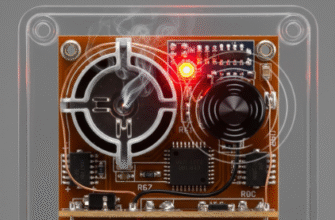Despite the omnipresence of smartphones buzzing in our pockets, the humble landline telephone still holds its ground in many homes and businesses. That familiar dial tone, the reassuring click of picking up a receiver – these rely on a physical infrastructure that hasn’t changed dramatically in decades. Central to this system are the phone jacks mounted on our walls and the cables that bridge the gap between the wall and the phone itself. Understanding these components is key to maintaining a clear, reliable voice connection.
The Wall Socket: Meet the Phone Jack
The most common interface you’ll encounter is the phone jack, technically known as a Registered Jack, or RJ. For standard home and small business telephone lines in North America and many other parts of the world, the specific type is almost universally the
RJ11 jack. Look closely at your wall, and you’ll likely see one – a small, usually beige or white, plastic socket with six potential pin positions, though typically only two or four are actually wired and used for a single phone line.
This jack serves as the termination point for the telephone wiring running within your walls, linking your home or office back to the telephone company’s network. Its purpose is simple: provide a standardized, easily accessible point to plug in your telephone equipment. The design allows for quick connection and disconnection without needing tools or technical expertise.
Registered Jacks: A Little More Detail
The “Registered Jack” system was introduced by the Bell System in the 1970s to standardize connections for telephone equipment. While RJ11 is the star for single-line phones, you might occasionally encounter related jacks:
- RJ11: Uses a 6-position, 4-conductor (6P4C) or sometimes 6-position, 2-conductor (6P2C) connector. This is the standard for single telephone lines. The middle two conductors (pins 3 and 4) are typically used for the first line.
- RJ14: Physically identical to RJ11 (uses the same 6P4C connector) but wired to support two separate telephone lines. It utilizes all four middle conductors (pins 2, 3, 4, and 5). You might find this in office settings or homes with dedicated fax lines alongside a voice line.
- RJ45: Often confused with phone jacks, this is a larger 8-position, 8-conductor (8P8C) jack used primarily for Ethernet networking, not traditional voice lines. Plugging a phone cable into an Ethernet jack (or vice-versa) won’t work and could potentially damage the connectors.
For the vast majority of traditional voice connections, RJ11 is the jack you’ll be dealing with.
The Lifeline: Phone Cables Explained
The cable connecting your phone to the RJ11 wall jack is specifically designed for voice signals. Unlike the robust, shielded cables used for computer networking, typical phone cables are simpler and often flat rather than round.
Anatomy of a Phone Cable
A standard phone line cord usually has an RJ11 connector on both ends. Inside the flat outer jacket, you’ll typically find four or sometimes six thin copper wires (conductors). Each wire is individually insulated with color-coded plastic.
- 4-Conductor Cable (Most Common): These cables directly correspond to the wiring in an RJ11 or RJ14 jack using the middle four pins. The standard color code often involves black, red, green, and yellow wires.
- 6-Conductor Cable: These offer compatibility with systems that might use the outer pins (1 and 6) for other purposes, like power or specific features on some phone systems, though this is less common for simple residential setups.
The connectors at each end are crucial. The small plastic tab ensures the plug clicks securely into the jack and can only be inserted one way, preventing incorrect connections. The tiny metal contacts inside the plug press against the corresponding contacts within the jack, completing the electrical circuit.
Tip and Ring: The Core Concept
Inside the phone system’s wiring, the two primary conductors carrying a single phone line’s signal and power are referred to as
Tip and
Ring. This terminology dates back to the early days of manual telephone switchboards, where operators used plugs with distinct sections:
- Tip: The very end (tip) of the operator’s plug. Typically carries the positive (+) side of the circuit or ground. In modern RJ11 wiring, this usually corresponds to the green wire (pin 4).
- Ring: A ring conductor just behind the tip on the plug shaft. Typically carries the negative (-) side of the circuit and the ringing voltage. In modern RJ11 wiring, this usually corresponds to the red wire (pin 3).
For a standard single line connection using an RJ11 (6P4C) connector, the Tip wire connects to pin 4 and the Ring wire connects to pin 3. If a second line is present (using RJ14 wiring), its Tip and Ring pair typically use pins 5 (often yellow) and 2 (often black), respectively.
Connecting Handsets: The Coiled Cord
It’s important to distinguish the line cord (wall-to-phone) from the handset cord (phone base-to-handset). The handset cord is almost always coiled to allow flexibility and prevent tangling. More importantly, it usually uses smaller connectors on both ends. These connectors look like miniature RJ11 plugs and are often referred to as
RJ9, RJ10, or RJ22. Technically, these aren’t official “Registered Jack” designations, but the terms are commonly used. This connector is typically a 4-position, 4-conductor (4P4C) type, carrying the microphone signal and the earpiece signal between the base and the handset.
You cannot use a standard RJ11 line cord to connect a handset, nor can you use a handset cord to connect the phone to the wall jack. The connectors are physically different sizes.
Behind the Scenes: Wall Wiring
The RJ11 jack on your wall connects to wiring hidden within the walls. Traditionally, this was simple twisted-pair wiring, often referred to as Category 1 or Category 2. Modern installations frequently use
Category 3 (Cat 3) cable, which is also a type of twisted-pair wiring designed specifically for telephone voice communications. It typically contains multiple pairs (e.g., blue/white-blue, orange/white-orange, green/white-green, brown/white-brown) allowing for multiple lines to be run within a single cable sheath, although only one pair is needed for a single phone line connected to an RJ11 jack.
This wiring eventually leads back to a demarcation point (often a box on the outside of your house or in a utility closet) where your internal wiring connects to the external network provided by the telephone company.
Making the Connection
Connecting a standard phone is straightforward:
- Identify the correct phone jack on the wall (RJ11).
- Take one end of the RJ11 phone line cord and plug it firmly into the wall jack until it clicks.
- Identify the corresponding RJ11 jack on the back or side of your telephone base unit.
- Plug the other end of the phone line cord firmly into the phone’s jack until it clicks.
- If your phone has a separate handset, connect it to the base using the coiled handset cord (with the smaller RJ9/RJ22 connectors). Ensure it clicks into place at both the handset end and the base unit end.
- Listen for a dial tone.
Check Your Connections: Always ensure you are using the correct cable type (RJ11 line cord for wall-to-phone, RJ9/RJ22 handset cord for base-to-handset). Plugging the wrong cable type into a jack, especially mistaking a phone cable for an Ethernet cable (RJ45), will not work and could potentially damage the port or the plug. Double-check that plugs are fully inserted and click securely into place for a reliable connection.
Troubleshooting Common Voice Connection Issues
Problems with landline phones often stem from physical connection issues:
- No Dial Tone: Check that the line cord is securely plugged in at both the wall and the phone base. Try a different phone cord if possible. Try plugging a known working phone into the same wall jack to determine if the issue is with the phone or the line/jack itself.
- Static, Crackling, or Humming: This can be caused by a damaged phone cord (internal wires breaking), a faulty wall jack, or interference. Wiggle the cord gently at both ends; if the noise changes, the cord is likely faulty. Check for visible damage to the cord or jack. Sometimes, nearby electronic devices can cause interference; try moving the phone base. Poorly installed or aging internal wiring can also be a culprit.
- Intermittent Connection: Similar to static issues, this often points to a loose connection or a damaged cable where the internal wires make contact only sporadically. Reseat both ends of the phone cord. Inspect the cord for kinks or damage.
- Phone Doesn’t Ring: Ensure the phone’s ringer is turned on. Check the Tip and Ring connections (pins 3 and 4 in the jack) are making good contact. A faulty phone or jack could be the cause.
The Enduring Connector
While Voice over IP (VoIP) systems that use internet connections and mobile phones have become dominant forms of communication, the physical infrastructure for traditional landlines persists. Many businesses rely on dedicated phone systems using these connections, and numerous homes maintain landlines for reliability, emergencies (as they often work during power outages unlike VoIP or cordless phones), or simply out of habit. Understanding the roles of the RJ11 jack and the associated cables remains relevant for managing and troubleshooting these essential voice connections.
From the simple click of the plug into the jack to the complex network behind it, these components work together seamlessly most of the time. Knowing how they function and how to spot potential problems can save time and frustration when your trusty landline encounters a glitch. The technology might seem old-fashioned compared to wireless wonders, but its simplicity and reliability are precisely why it continues to serve us.
“`








